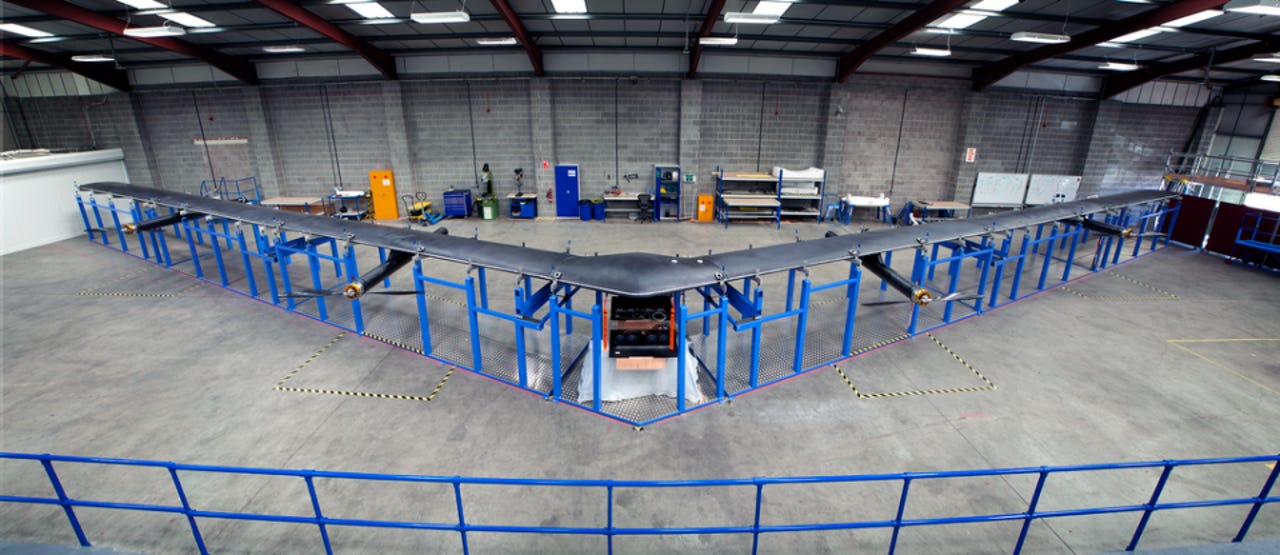Facebook readies drone with wingspan of a Boeing 737


Facebook has built a solar-powered drone with the wingspan of an airliner to broadcast internet connectivity to remote regions of the world.
The social networking giant says it is ready to test the Aquila drone, which when deployed will stay in the air for up to 90 days and fly at an altitude of between 60,000 and 90,000 feet.
Aquila has the wingspan of a Boeing 737 but weighs hundreds of times less, due to its design and lightweight carbon-fiber frame.
Facebook wants the drone to be used to offer free access to basic online services to the billions of people worldwide who don't have internet connectivity, and who are often located in poor and isolated regions.
But the Internet.org scheme has been cricitised for only offering access to a limited selection of sites - which includes the BBC, Facebook, Wikipedia and tens of region-specific services.
Critics - including worldwide web inventor Tim Berners-Lee - say the free scheme makes it more difficult for native telcos to sell access to the internet and in doing so restricts access to the wider web.
According to Facebook, Internet.org has provided more than one billion people in 17 countries with access to its services since launching two years ago.
Many of those already served by Internet.org live in regions where they can receive a 3G wireless signal. Aquila is aimed at providing connectivity to the 10 percent of the global population living in regions with no internet infrastructure.
To complement Aquila, a separate Facebook team has designed a laser for sharing data between drones, which would allow multiple craft to offer connectivity over a wide area.
The laser can relay tens of gigabytes of data per second - about "10x faster than the previous state-of-the-art in the industry", according to Jay Parikh, VP of global engineering and infrastructure at Facebook.
"When finished, our laser communications system can be used to connect our aircraft with each other and with the ground, making it possible to create a stratospheric network that can extend to even the remotest regions of the world," he said.Facebook doesn't intend to run the networks that will use these technologies, Parikh said, but to "advance the state of these technologies to the point that they become viable solutions for operators and other partners to deploy".
Facebook is far from the only tech giant to be experimenting with drones. Earlier this week Amazon called for airspace to be reserved for the unmmanned aircraft to pave the way for its plans for deliveries by drone.